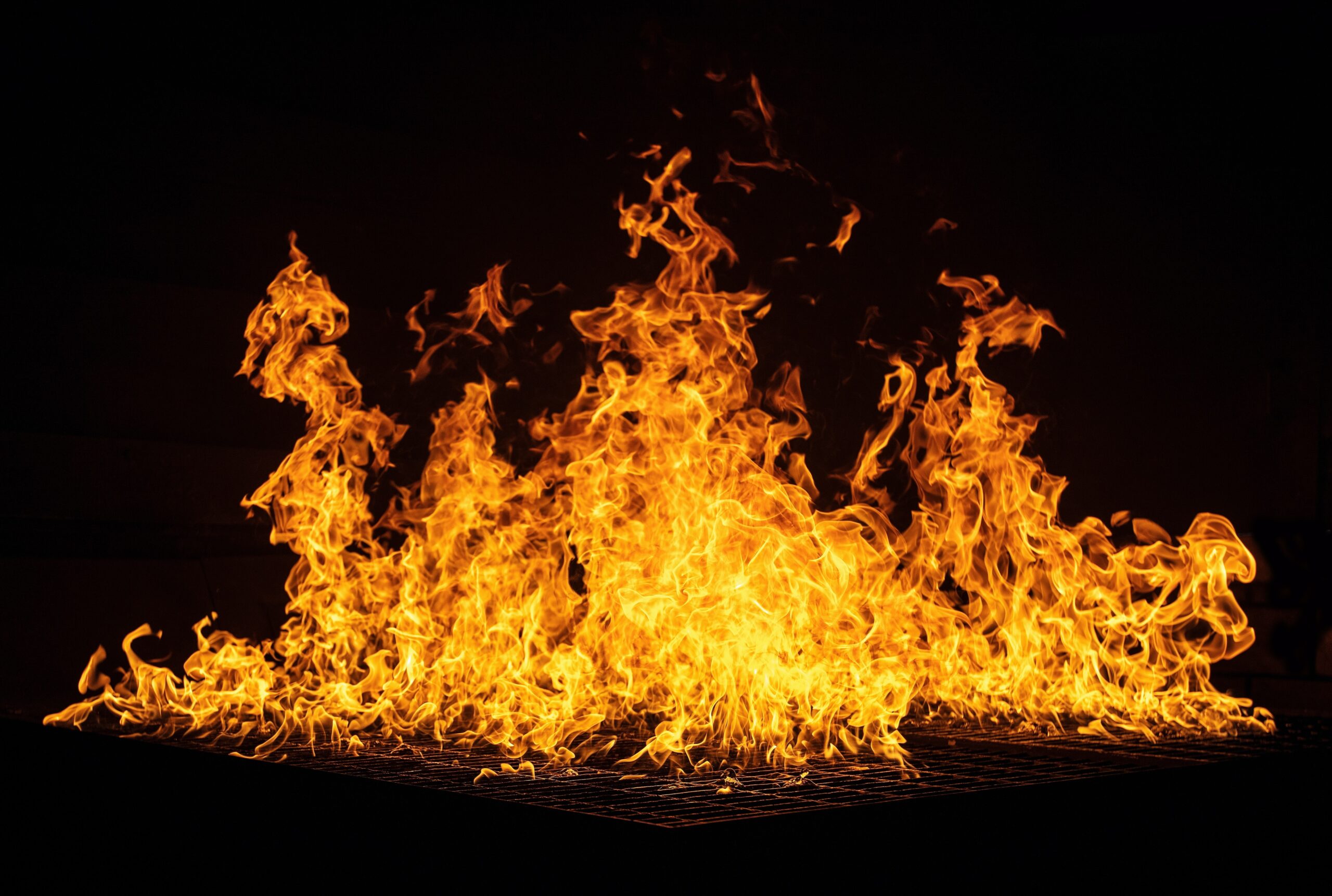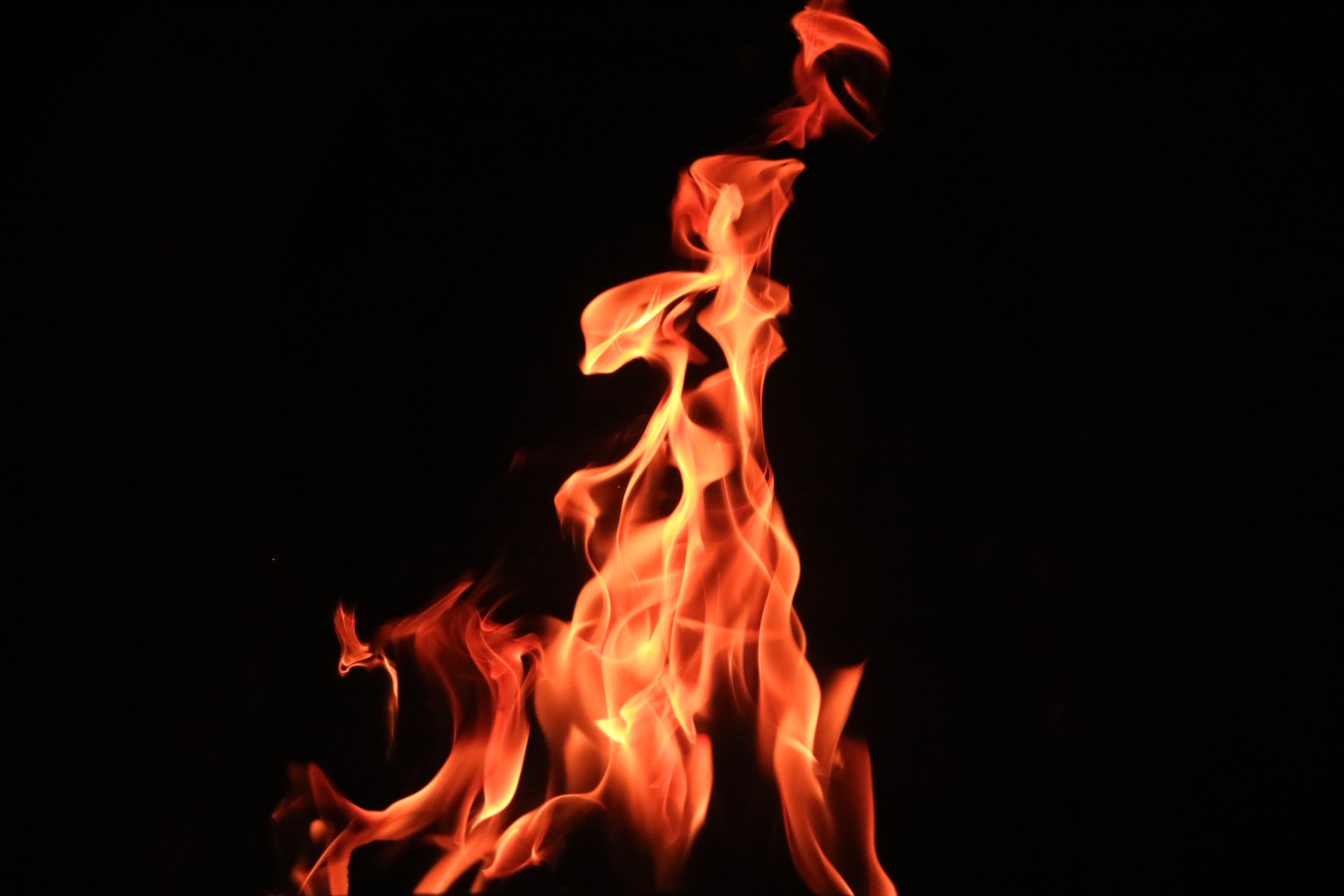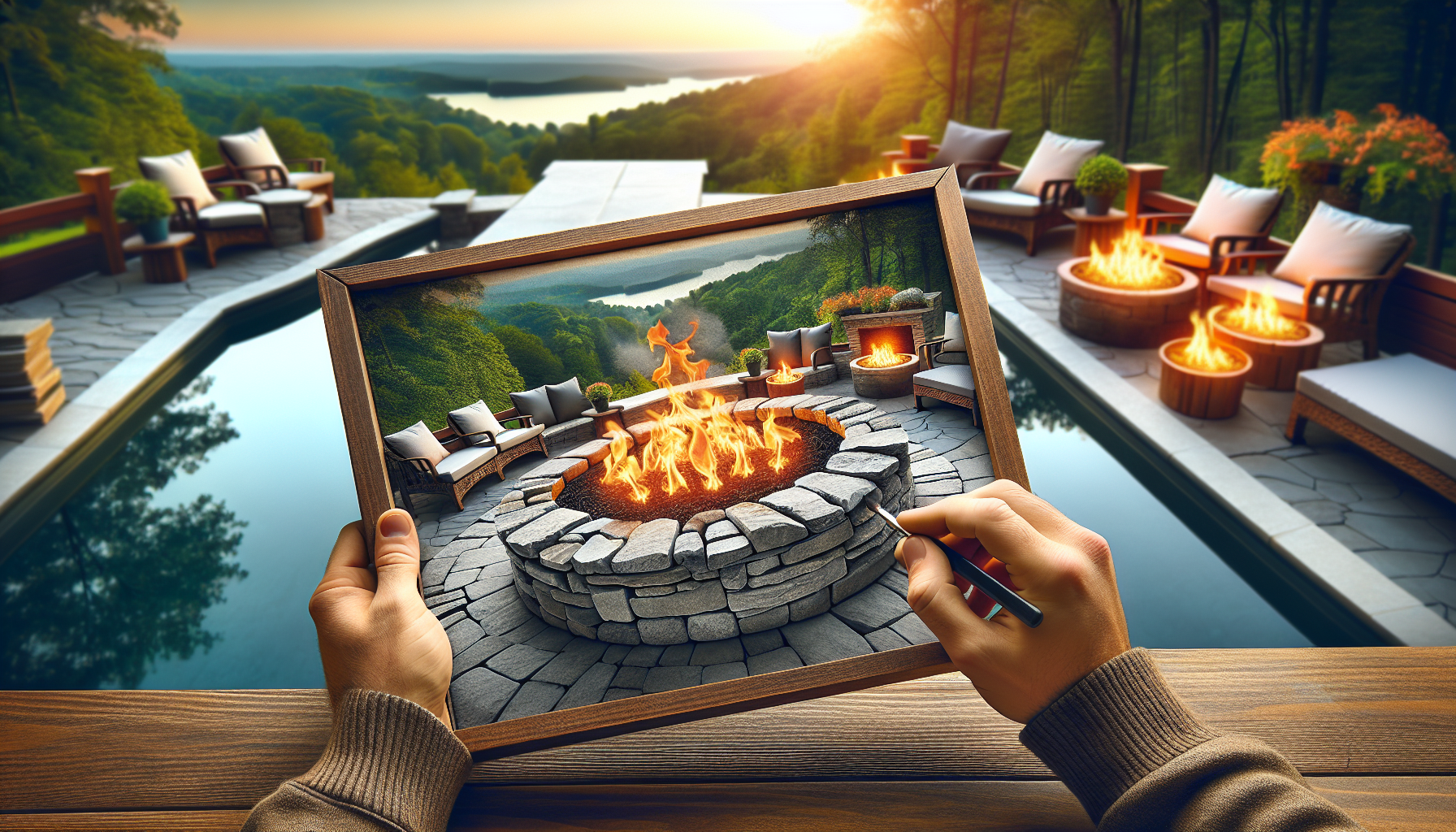Imagine sitting around a crackling fire on a starry night, the warm glow casting shadows on the faces of friends and family. Outdoor fire pits have become a popular addition to backyards, providing a cozy ambiance and a place to gather. When it comes to choosing the material for your fire pit, stone emerges as a timeless favorite. With its natural rustic charm and durability, stone has proven itself to be an excellent choice for creating the perfect outdoor oasis. Whether you prefer a sleek and modern design or a more traditional look, stone fire pits offer endless possibilities for enhancing your outdoor space.
The Benefits of Stone Fire Pits
Stone fire pits are an excellent choice for outdoor spaces and offer several advantages over other materials. From durability to heat retention and aesthetics, stone fire pits are a popular choice among homeowners looking to create a cozy and inviting atmosphere in their backyard. Let’s explore the benefits of stone fire pits in more detail.
Durability
One of the key benefits of stone fire pits is their durability. Stone is a natural material that can withstand the elements and the high temperatures generated by the fire. Unlike other materials that may crack or warp over time, stone fire pits can endure years of use without losing their structural integrity. This makes them a long-lasting investment for your outdoor space.
Heat Retention
Another advantage of stone fire pits is their ability to retain heat. Due to the natural properties of stone, it absorbs and radiates heat efficiently, creating a warm and cozy ambiance. This means that even after the fire has died down, the stone fire pit continues to emit warmth, allowing you and your guests to enjoy the fire late into the night.
Aesthetics
Stone fire pits are undeniably beautiful and can enhance the overall aesthetics of your outdoor space. With a wide range of stone types available, you can choose the one that complements your existing landscape and personal style. Whether you prefer the rustic charm of sandstone or the sleek elegance of granite, there is a stone fire pit design to suit every taste.
Types of Stone for Fire Pits
When it comes to selecting the right stone for your fire pit, you have several options to choose from. Each type of stone has its unique characteristics, so it is important to consider factors such as aesthetics, durability, and heat retention when making your decision.
Granite
Granite is a popular choice for stone fire pits due to its durability and natural beauty. This igneous rock is known for its strength and resistance to heat, making it an ideal option for long-lasting fire pits. Granite comes in a variety of colors and patterns, allowing you to create a unique and visually appealing fire feature in your outdoor space.
Sandstone
Sandstone is another excellent choice for fire pits, thanks to its natural ability to retain heat. This sedimentary rock has a warm and earthy appearance, making it a great option for those seeking a more rustic or natural aesthetic. Sandstone fire pits can blend seamlessly with the surrounding landscape, adding a touch of natural beauty to your outdoor area.
Limestone
Limestone is a versatile stone that is often used for fire pits due to its durability and heat resistance. This sedimentary rock is available in various textures and colors, allowing you to create a fire pit that matches your personal style. Limestone fire pits are not only visually appealing but also highly durable, making them an excellent choice for outdoor use.
Slate
Slate is a metamorphic rock that offers a unique and sophisticated look to fire pits. Known for its fine-grained texture and rich color variations, slate can add a touch of elegance to any outdoor space. In addition to its aesthetic appeal, slate is also highly durable and heat-resistant, making it a reliable choice for a stone fire pit.
Brick
Although not strictly a stone, brick is often used in fire pit construction due to its strength and heat resistance. Bricks can withstand high temperatures without cracking or deteriorating, making them a reliable choice for a long-lasting fire feature. With their classic and timeless appearance, brick fire pits can add charm and character to any outdoor setting.
Considerations for Stone Fire Pits
Before building a stone fire pit, there are several important considerations to keep in mind. From selecting the right size and location to implementing safety measures and performing regular maintenance, these factors play a vital role in the enjoyment and longevity of your fire pit.
Size and Location
When choosing the size of your stone fire pit, it is essential to consider the available space in your outdoor area. You want to ensure that your fire pit is proportionate to the area and does not overpower or overcrowd the space. Additionally, the location of your fire pit should be carefully selected to ensure maximum safety and convenience. It is important to choose a location away from any flammable objects or structures and to avoid placing it too close to your home or trees.
Safety Measures
Safety should always be a top priority when it comes to fire pits. When building a stone fire pit, it is crucial to implement safety measures to prevent accidents and ensure the well-being of everyone in your outdoor space. This includes installing a fire screen to prevent embers from escaping, keeping a fire extinguisher nearby, and maintaining a safe distance between the fire pit and flammable objects. Additionally, it is essential to educate yourself and your guests on fire safety protocols and always supervise the fire when it is lit.
Maintenance
Proper maintenance is key to keeping your stone fire pit in excellent condition for years to come. Regular cleaning is essential to remove ash and debris, which can build up and affect the performance of your fire pit. A simple brush and dustpan or a vacuum cleaner can be used to clean the fire pit’s interior. Additionally, it is important to inspect the stones periodically for cracks or damage and repair them as necessary. Applying a protective sealant can also help preserve the appearance and durability of your stone fire pit.
Building a Stone Fire Pit
Building a stone fire pit requires careful planning and execution. From choosing the right design to laying the foundation and stacking the stones, each step plays a crucial role in the construction process. Let’s explore the key steps involved in building a stone fire pit.
Choosing the Right Design
Before starting the construction of your stone fire pit, it is important to choose the right design that suits your outdoor space and personal preferences. Consider factors such as size, shape, and style when selecting a design. Whether you prefer a traditional round fire pit or a more modern square or rectangular design, there are endless possibilities to choose from.
Preparing the Site
Once you have selected the design for your stone fire pit, the next step is to prepare the site. Start by clearing the area of any debris or vegetation that may interfere with the construction process. Ensure that the ground is level and stable, as this will help prevent any shifting or cracking of the fire pit over time. Mark the outline of the fire pit using spray paint or stakes and string to guide you during the construction process.
Laying the Foundation
Creating a solid foundation is crucial for the stability and longevity of your stone fire pit. Start by excavating the marked area to a depth of about six to eight inches. The hole should be wider than the intended size of the fire pit to allow space for the foundation materials. Next, fill the hole with a layer of gravel or crushed stone to provide drainage and prevent water from accumulating. Compact the gravel layer and ensure it is level before moving on to the next step.
Stacking the Stones
Once the foundation is in place, it is time to start stacking the stones to create the walls of your fire pit. Begin by placing the first row of stones on top of the foundation, ensuring that they are level and secure. Use a combination of mortar and construction adhesive to secure the stones in place, following the manufacturer’s instructions. Continue stacking the stones, adding mortar and adhesive as needed, until you reach the desired height.
Finishing Touches
After the stone walls are complete, it is time to add the finishing touches to your fire pit. This may include installing a fire ring or grate to support the wood or fuel, as well as adding decorative elements such as a stone cap or seating area. Regularly inspect your stone fire pit for any necessary repairs or maintenance to keep it in optimal condition.

Comparing Stone to Other Fire Pit Materials
While stone fire pits offer many benefits, it is important to consider other materials before making a final decision. Let’s compare stone fire pits to steel, brick, and concrete fire pits to see how they stack up.
Steel
Steel fire pits are known for their durability and modern aesthetic. They are often portable and can be moved around the outdoor space as needed. However, compared to stone fire pits, steel fire pits may not have the same heat retention capabilities and can be prone to rust or discoloration over time.
Brick
Brick fire pits have a timeless and classic appearance that can add charm to any outdoor setting. Like stone fire pits, brick fire pits are durable and offer good heat retention. However, bricks can deteriorate over time, especially if not properly maintained, and may require periodic repairs or replacement.
Concrete
Concrete fire pits are a popular choice due to their versatility and affordability. They can be customized to any size or shape, making them a great option for those seeking a unique design. However, concrete fire pits may not have the same aesthetic appeal as stone fire pits and can be prone to cracking or chipping over time.
Stone Fire Pit Accessories
To enhance your stone fire pit experience, there are several accessories that you can consider adding to your outdoor space. These accessories not only add functionality but also contribute to the overall ambiance of your fire pit area.
Fire Screens
Fire screens are essential for safety when using a fire pit. They help prevent sparks and embers from escaping the fire pit, reducing the risk of fire and protecting your outdoor space. Additionally, fire screens can add a decorative element to your stone fire pit, enhancing its overall appearance.
Fire Pit Covers
Fire pit covers are an excellent way to protect your stone fire pit from the elements when it is not in use. These covers help prevent debris, rain, and snow from entering the fire pit, ensuring it stays clean and functional for longer. Fire pit covers can be easily removed when you are ready to use the fire pit, making them a convenient accessory to have.
Grates and Cooking Accessories
If you enjoy outdoor cooking, consider adding grates or cooking accessories to your stone fire pit. These accessories allow you to grill food directly over the fire, adding a delicious smoky flavor to your meals. From grill grates to rotisserie attachments, there are many options available to suit your culinary preferences.
Seating and Decorative Elements
To create a welcoming and cozy atmosphere around your stone fire pit, consider adding seating and decorative elements. Stone benches or built-in seating can provide comfortable seating options for you and your guests. Additionally, incorporating decorative elements such as outdoor rugs, throw pillows, and string lights can enhance the overall ambiance of your fire pit area.

Stone Fire Pit Cost and Installation
The cost of building a stone fire pit can vary depending on several factors, including the type of stone, size of the fire pit, and whether you choose to hire professionals or do it yourself. Let’s explore the different cost considerations for stone fire pits.
Material Costs
The cost of stone for your fire pit will depend on the type of stone you choose. Granite, for example, tends to be more expensive than sandstone or limestone. Additionally, the size of your fire pit will also impact the material costs, as larger fire pits require more stones. It is advisable to consult with a local supplier or contractor to get an accurate estimate for the cost of materials based on your specific project.
Labor Costs
If you choose to hire professionals for the installation of your stone fire pit, labor costs will be a factor to consider. The cost of labor will depend on various factors such as the complexity of the design, the size of the fire pit, and the location. It is recommended to obtain multiple quotes from reputable contractors to compare prices and ensure you are getting a fair deal.
DIY vs Professional Installation
While hiring professionals may incur additional costs, it can save you time and ensure a high-quality installation. However, if you have the necessary skills and experience, building a stone fire pit yourself can be a cost-effective option. DIY installations require careful planning, research, and attention to detail to ensure a safe and durable fire pit. It is essential to follow proper construction techniques and consult reliable resources or seek professional advice if needed.
Tips for Maintaining a Stone Fire Pit
To keep your stone fire pit looking and performing its best, regular maintenance is essential. Here are some tips to help you maintain your stone fire pit:
Regular Cleaning
Regularly remove ash and debris from the interior of your fire pit using a brush and dustpan or a vacuum cleaner. Clean the stones to remove any soot or stains using a mild detergent or stone cleaner and a soft brush. Rinse the stones thoroughly with water to remove any cleaning residue. This will help prevent build-up and keep your fire pit looking its best.
Repairing Cracks or Damage
Inspect your stone fire pit regularly for any cracks or damage. Small cracks can often be repaired using a stone repair mortar or epoxy. If there is extensive damage or the stones are severely cracked, it may be necessary to replace them. Promptly addressing any cracks or damage will help maintain the structural integrity of your fire pit.
Protective Sealants
Applying a protective sealant to your stone fire pit can help enhance its longevity and appearance. Sealants create a barrier that protects the stones from moisture, UV rays, and stains. It is important to choose a sealant specifically designed for outdoor stone use and follow the manufacturer’s instructions for application. Reapply the sealant as recommended to ensure continued protection.

Using a Stone Fire Pit Safely
Safety should always be a priority when using a stone fire pit. Here are some essential safety tips to follow:
Clearing Surrounding Area
Before starting a fire, ensure that the area around your fire pit is clear of any flammable objects, such as dry leaves or branches. Maintain a safe distance between the fire pit and buildings, trees, or other structures. This will help prevent the fire from spreading and minimize the risk of accidents.
Safe Wood or Fuel Selection
Choose the right type of wood or fuel for your fire pit. Hardwoods such as oak, maple, or hickory are recommended for clean-burning and longer-lasting fires. Avoid using treated woods, as they can release toxic fumes when burned. It is also important to avoid using accelerants such as gasoline, as they can cause uncontrollable fires.
Supervision and Extinguishing the Fire
Never leave your fire pit unattended, especially when there are children or pets present. Always have a fire extinguisher, bucket of sand, or garden hose nearby in case of emergencies. When you are done using the fire pit, extinguish the fire completely by pouring water or sand over the embers. Ensure that the fire is completely out and the stones have cooled before leaving the area.
Stone Fire Pits: Pros and Cons
While stone fire pits offer numerous benefits, it is important to consider the advantages and disadvantages before making a decision. Let’s take a closer look at the pros and cons of stone fire pits:
Advantages
- Durability: Stone fire pits are known for their long-lasting durability and ability to withstand the elements.
- Heat Retention: Stone’s natural properties allow it to absorb and radiate heat efficiently, creating a warm and cozy environment.
- Aesthetics: Stone fire pits offer a wide range of options to match any outdoor space’s style and enhance its overall aesthetics.
- Customization: Stones can be arranged in various patterns and configurations, allowing for unique and personalized designs.
- Versatility: Stone fire pits can be used for both recreational purposes and outdoor cooking, adding versatility to your outdoor space.
Disadvantages
- Cost: Stone fire pits can be more expensive compared to other materials, especially if you choose high-end stones such as granite.
- Maintenance: Stone fire pits require regular cleaning and maintenance to keep them in optimal condition.
- Challenging Installation: Building a stone fire pit may require specialized knowledge and skills, or the assistance of professionals.
In conclusion, stone fire pits are a fantastic addition to any outdoor space, offering durability, heat retention, and aesthetic appeal. By carefully choosing the right type of stone, considering size and location, implementing safety measures, and performing regular maintenance, you can enjoy the warmth and charm of a stone fire pit for years to come. Whether you choose to hire professionals or take on a DIY project, a stone fire pit is sure to become the centerpiece of your backyard gatherings and create lasting memories with family and friends.


